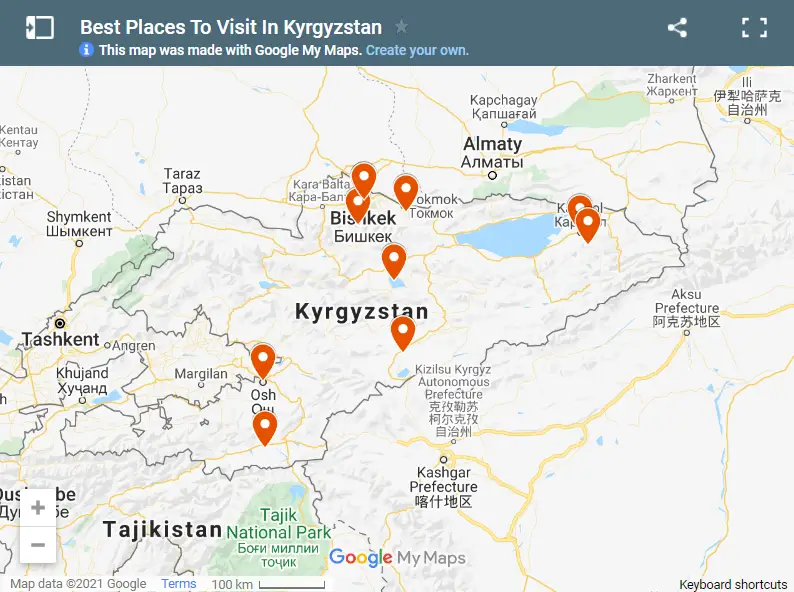Considering a trip to Kyrgyzstan? Wondering what to do in Kyrgyzstan? Where you should go? What are the best places to visit in Kyrgyzstan? What are the top things to do in Kyrgyzstan?
You are in the right place!
Kyrgyzstan is a fabulous country to visit. Little known among even avid travellers, this country in Central Asia has some great places worth visiting and some interesting things to do and cultures to explore.


In fact, one of the best parts is that it’s not on the main tourist trail. You can have parts of Kyrgyzstan to yourself and feel like you are a true adventurer! While still being somewhere that is not that hard to navigate and where you can make some great plans and have a fantastic adventure.
In fact, before I started planning a trip here, I didn’t realise just how many great things to do Kyrgyzstan that there are. It blew me away and I couldn’t wait to get to this country.
Below, you will find our list of the top Kyrgyzstan things to do. I hope it will also make you super excited to book your trip to Kyrgyzstan and have an amazing time.
Whether you are interested in the top tourist attractions in Kyrgyzstan or getting away from it all, we cover it all in the best places to see in Kyrgyzstan below!
Top 10 Best Places To Visit In Kyrgyzstan
Bishkek
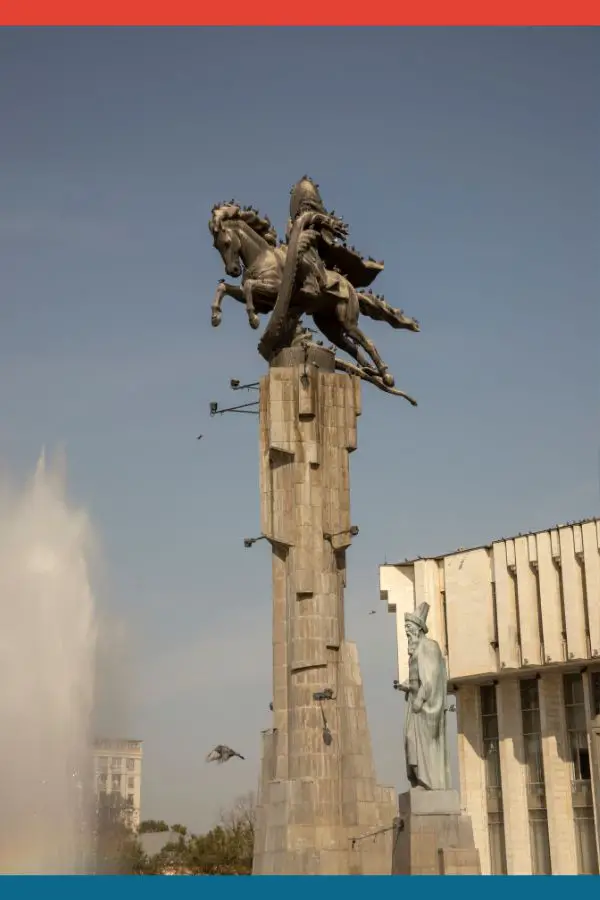
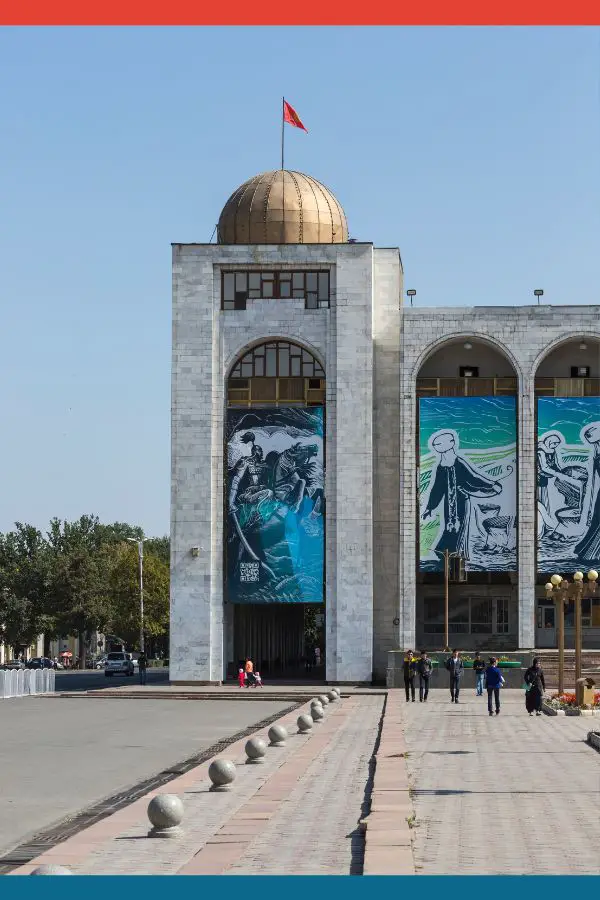
A nation defined by its natural beauty, and with most attractions rural and at high altitude, many travellers transit through the capital city without spending time here. However, a day is not nearly enough to enjoy all on offer in this surprisingly cosmopolitan city. Spend your time exploring the museums, discovering monuments, and tasting the emerging food scene.
Bishkek is the capital of the Kyrgyz Republic, its economic, political, and cultural centre. Located in the Chuy region, at the slopes of the Kyrgyz Range, approx. 800 meters above sea level, it is home to a million people and a diverse 82 ethnicities.
Central Asia’s greenest city, Bishkek is filled with brutalist architecture that offers you a glimpse of the Soviet influence during its occupation. Visit Manas Statue, the State History Museum and the National Museum of Fine Arts, all presenting tough, grey concrete style structures that were meant to represent a strong and reliable government.
One of the top places to visit in Bishkek Kyrgyzstan is the Ala-Too Square and look out for the slow goose-stepping soldiers during the changing-of-the-guard, next to the national flagpole. In the evening locals enjoy gathering and relaxing here.
Visit the White House, a Stalinist modern construction that is home to the government of Kyrgyzstan, or head to the bright blue spires of the Russian Orthodox cathedral. Stroll on to Victory Square, designed with half a yurt structure and a sculpture of a woman. This is an important stopping point for newlyweds to place flowers at the eternal flame, paying tribute to those that fought in WWII.
Discover the State Museum of Applied Arts with Kyrgyz traditional handicraft examples and the Frunze House Museum, forming a concrete shell around an 1885 thatched cottage. Osh Bazaar or Green Bazaar are also great places to visit, with the latter full of colourful spices, fresh fruits and locally-grown vegetables.
Take a walk in the cosy Panfilov Park – with amusements and carnival rides – or Dubovyi (Oak) Park where the locals sit for hours over a game of chess. Don’t forget to wrap up warm!
Day trips from Bishkek include visiting the awesome Konorchek Canyon, a trail that you’ll most likely have all to yourself, and takes you through the most dramatic red sandstone canyons. Or a popular activity is a full day horseback ride around the Bishkek mountains.
In the evening check-out Bishkek’s handful of trendy underground clubs, thrumming to a techno beat, but we suggest to avoid the State Circus that continues to use animals in their act.
Getting to Bishkek: Bishkek is home to the major airport in the country with flights from neighbouring countries as well as from some other countries in Europe and Asia.
Top attraction to visit: Ala-Too Square
Ala Archa National Park
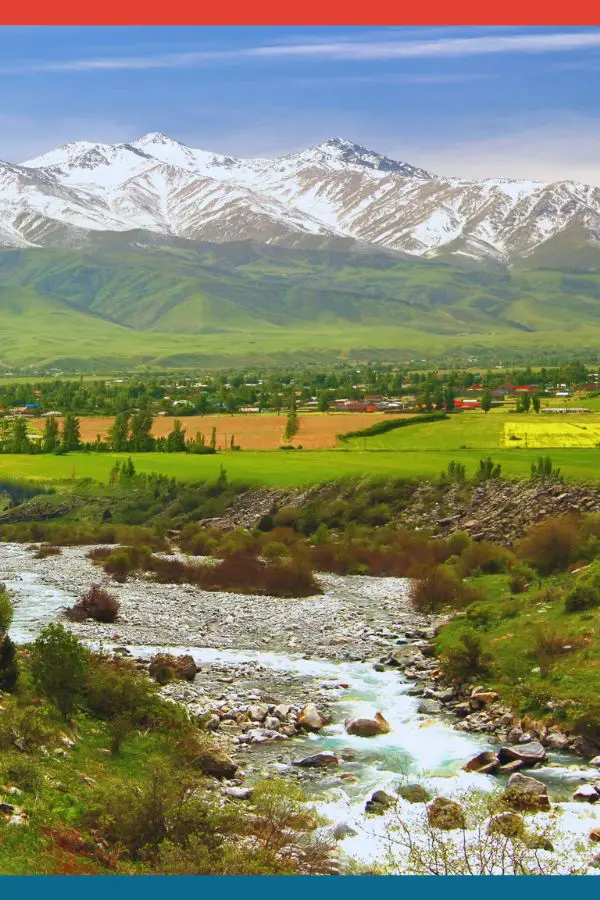
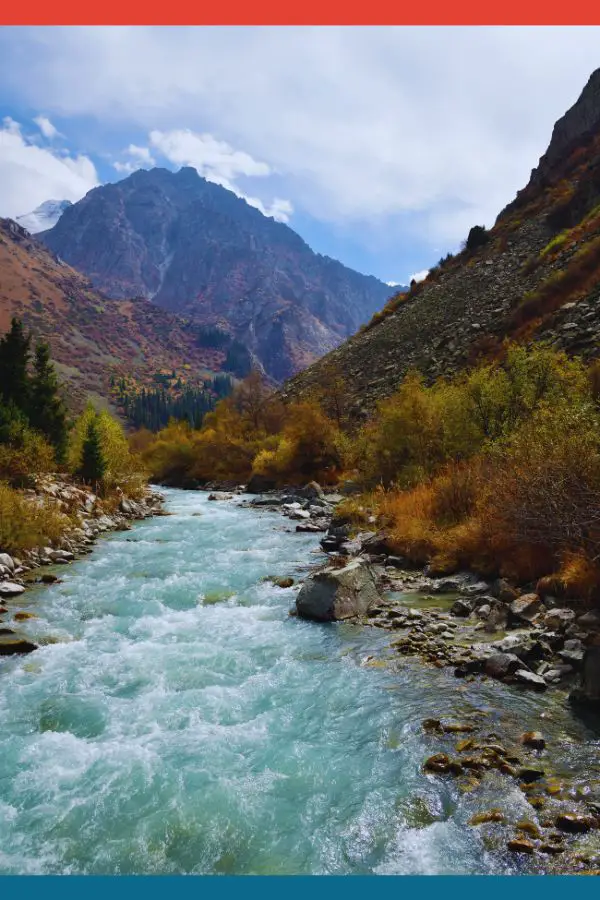
On the outskirts of Bishkek, approximately 40km south, is the Ala-Archa National Park – a popular day trip destination and one of the most beautiful places in Kyrgyzstan. Here you can enjoy the mountain slopes of the Kyrgyz Ranges, with lush forests and icy waterfalls.
Fresh air and divine nature, with over 800 species of plants, 40 species of animals and 160 of birds. An active area for mountaineering and alpinism, this National Park has over 150 hiking itineraries – with clearly marked trails – suitable for all levels and seasons.
A territory of over 200 sqkm, the park ranges from 1600-4875 meters, and has 20 small and large glaciers, and some 50 mountain peaks. The extremely rare snow leopard makes its home here, along with wild goats, roe deer and marmots.
Open year round, the park is most popular from late summer and into early autumn. Weekend picnickers, hikers, horse trekkers and skiers – along with mountain climbers, searching for ice, rock and mixed routes – descend on the National Park. And, if you have just arrived in the country, this is a great place to acclimatize to high altitudes prior to taking on some serious mountain treks.
With limited outlets in the area it is strongly recommended to bring your own food and water. There is a small fee for entering the park, and once inside the gate you drive 12km to a small hotel and parking area. Then, let the hiking begin!
Getting to Ala Archa National Park: Join an organised one-day tour from Bishkek, inclusive of transport and guide. Rent a car and self-drive, or use city taxi service for the 40km journey.
Top attraction to visit: Ala Archa National Park
Burana
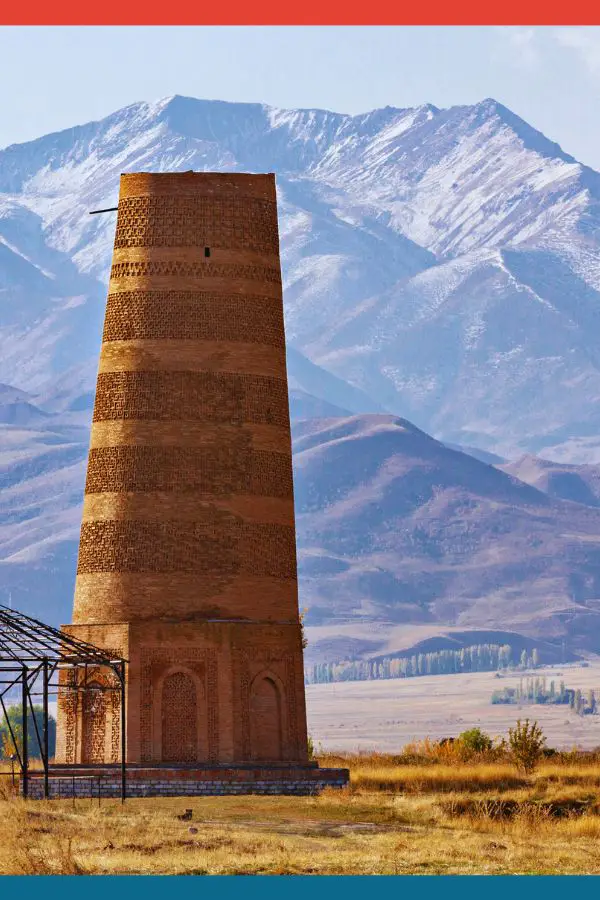
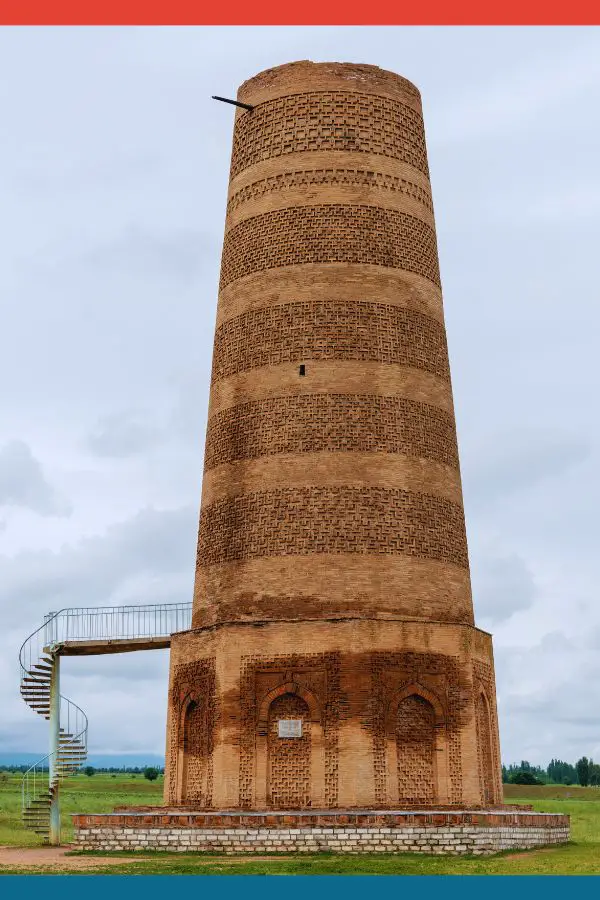
Being once a minaret of a mosque devoted to Karakhanid Khanate, Burana Tower is located near Tokmok in the territory of Balasagun. A medieval capital dating back to the 9-14th centuries, this archaeological site once had a citadel, mausoleum, mosque, church and bath-house. The tower, built of red bricks, now stands at only half its original size, 25 metres, with the accompanying mosque having long been destroyed.
Climb the winding stairway inside the tower for amazing panoramic views of the surrounding fields and – on a clear day – the Tien Shan mountains. An open-air archaeological and architectural museum can be visited at the base that relates the stories behind what is one of the top historical places in Kyrgyzstan.
Dotted in the surrounding fields are many Balbals, stoned carved steales, believed to have been used as gravestones by Turks when they roamed through Central Asia centuries ago.
6km from the Burana Tower, you may visit another famous archeological site – Ak-Beshim. The settlement is said to be of the famous medieval town of Suyab, used by merchants along the Silk Road. Remnants of ancient buildings, two Buddhist temples of VI-VII century, sculptures and art have been excavated.
Getting to Burana: An ideal day trip from Bishkek, join a group tour or travel independently 74km to Tokmok and further 14km by local taxi from Tokmok to The Burana Tower. Ensure to have your taxi wait for you before returning to Tokmok.
Top attraction to visit: The Burana Tower
Song Köl Lake

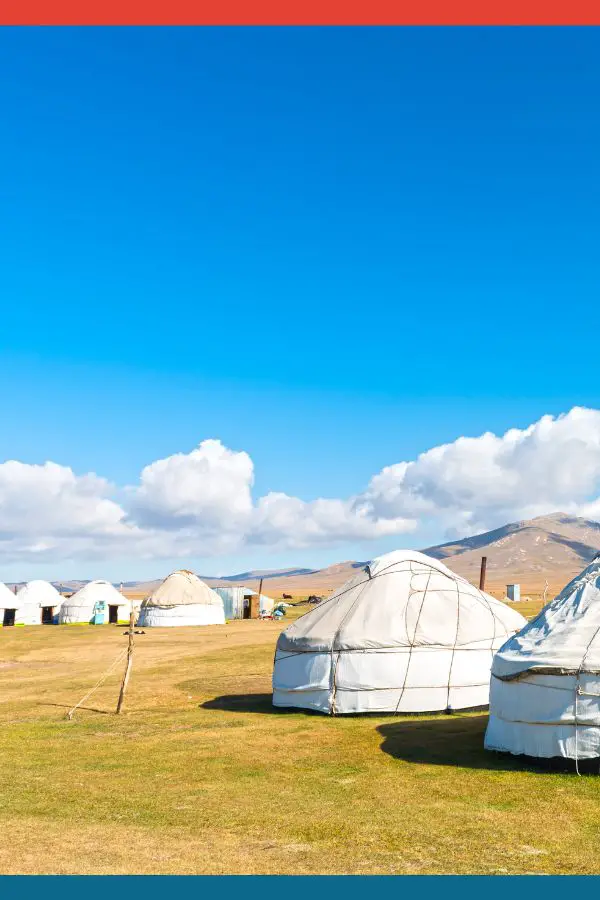
Located in the southwestern part of the Naryn province, in a basin between the Song Kul Too and Moldo Too mountain ridges, set at an altitude of 3016 meters, Song Kol Lake is Kyrgyzstan’s second largest lake.
Stretching almost 280km, the lake is fed by several mountain rivers and surrounded by stunning meadows. In summer these are used by nomadic shepherds, whilst from September to early May they are mostly covered in ice and snow.
The nearest settlement is Chaek Town, but in the summer months of July and August, yurt camps spring up along the banks of Song Kol, offering hostel-type romantic stays.
An extremely popular area for horseback tours – from one to two days – and hiking trails that will take you through the Jumgal Too mountain region, where you spend nights at dizzy heights sleeping in simple yurts under amazingly starry skies.
Watch out for a variety of animal and waterfowl, but the main beauty is the lake itself as the water changes from blue, to shades of purple and lush green. Mother nature at her best.
On our list of best places to visit, Kyrgyzstan has many winners, including Song-Kol. Camping in your yurt on the banks of the lake, dining on fresh meat prepared according to traditional recipes by the local nomad tribe, helping to milk cows and riding wild horses through pastures full of wildflowers… Epic.
Getting to Song Kol Lake: From Bishkek, travel 280km along the Bishkek-Naryn highway taking the Kalmak-Ashuu Pass, taking in the Burana Tower enroute.
Top attraction to visit: Song Kol Lake
Tash Rabat
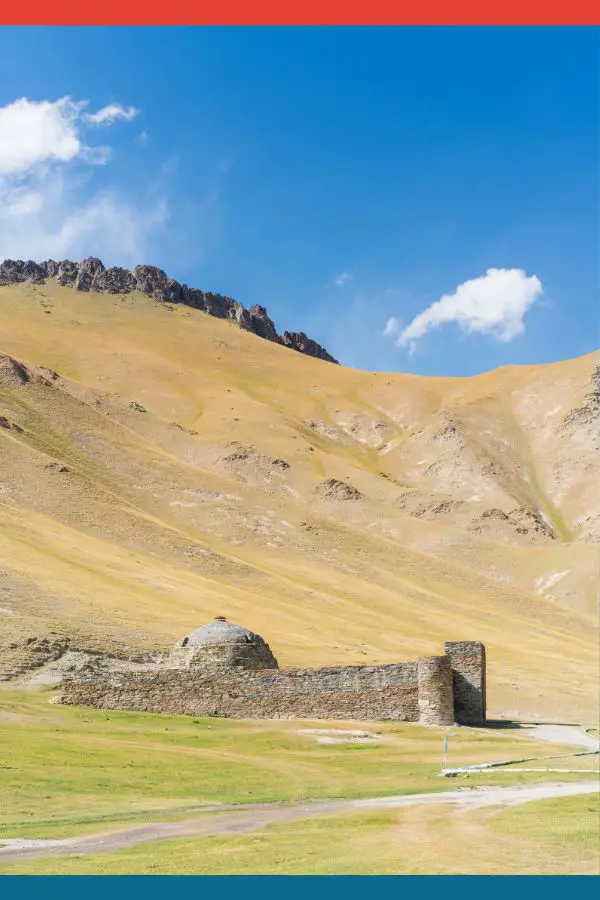
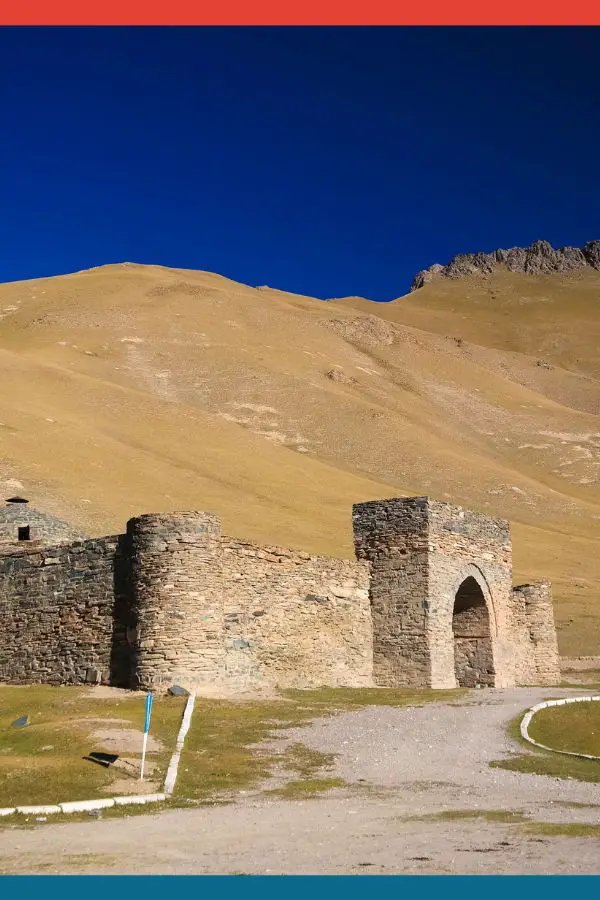
A caravanserai, Tash-Rabat was once a type of inn on the ancient Silk Road, built on the bank of the winding Tash-Rabat River. Extremely well-preserved, this historical monument, located 110km south of the town of Naryn, sits in the valley of Kara Koyun. At a dizzy altitude of more than 3200 metres it’s an amazing site of dark hefty stone, standing out against the mountainous backdrop and vast nothingness.
Built in the 15th century by a Khan who wanted to protect trade caravans from robbers, it was a stopover point for merchants and travellers when crossing the Tien Shan mountain range, passing through to the cities of the Fergana Valley.
These days, a visit to Tash-Rabat offers spectacular views as it is set in an impressive landscape similar to Tibet. What’s left of the structure is a blend between a castle and a temple. Brilliant sunshine outside, step inside and all is dark and cool. Contemplate the trades and deals once carried out here by the passing merchants in the stone corridors, antechambers and the huge domed central room.
Spend time becoming acquainted with the nomadic lifestyle of the locals and check-out the meadows overcrowded with livestock such as yaks, cows, horses and sheep. Stay overnight at one of the many yurt camps that have sprung up around Tash-Rabat, offering B&B or FB basis.
If you have time, take a thrilling two-day horseback trek from Tash-Rabat to Chatyr Kul Lake. Stretching back over centuries, Kyrgyz nomadic culture has strongly relied on horses, with nomads learning to ride before they can walk. Horses are used for transportation, labour and even in the local cuisine!
You can horse ride almost anywhere, but the epic scenery on this remote Silk Road route makes this ride a stand out activity. Climb hills, gallop through valleys and take the Tash-Rabat Pass at 4000 metres for a 360 degree view of Chatyr Kul Lake.
Getting to Tash-Rabat: First you will visit Naryn, the main city in the province. From Bishkek there are daily buses (marshrutkas) for the 5 hour journey. Naryn to Tash Rabat is 120km further south. With no public transport, take a direct taxi.
Top attraction to visit: Tash Rabat
Karakol
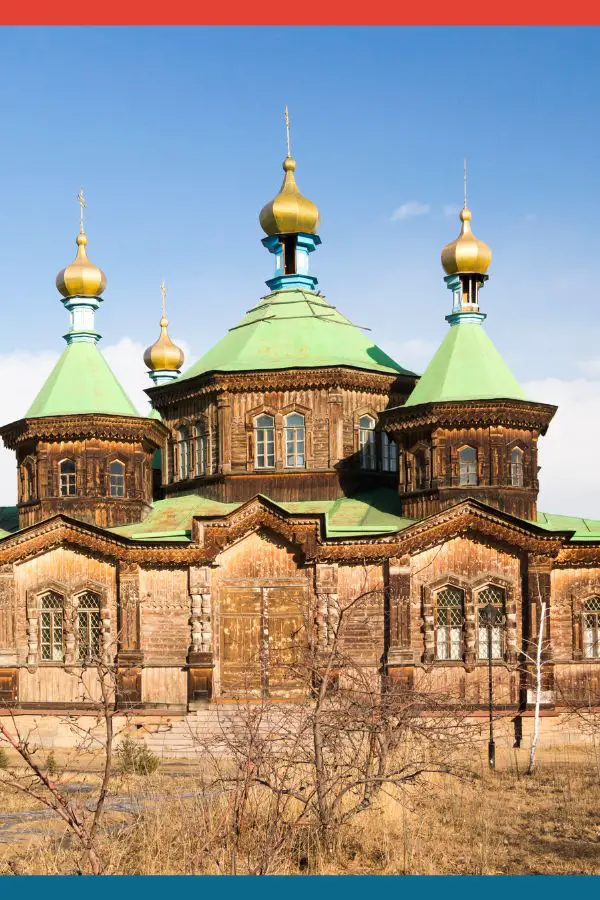
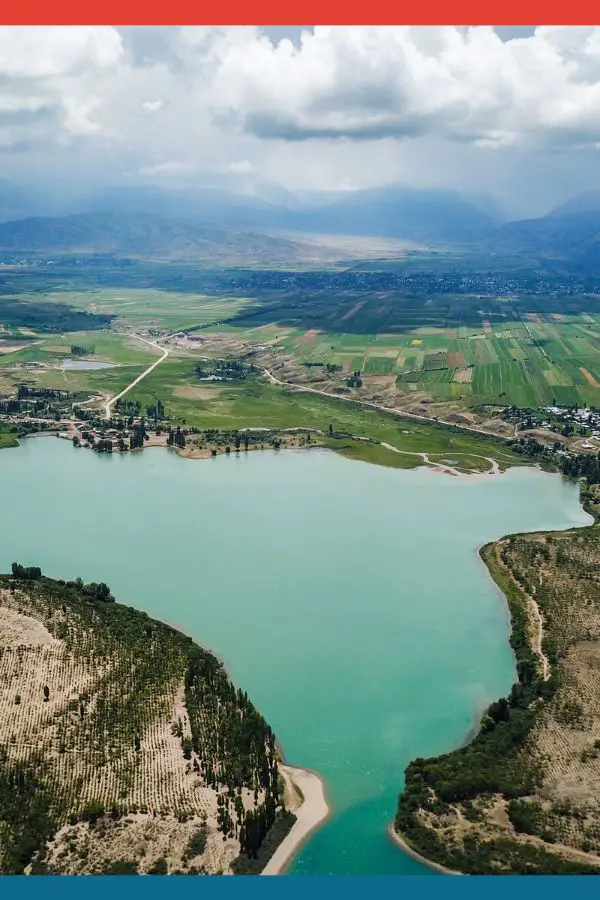
Known as the Crossroads of Asia, Karakol in eastern Kyrgyzstan is a fascinating gateway to the region’s diverse history, nature, and cuisine. Unique cultures blend forming both the cultural and culinary heritage of the city – Kyrgyz, Tatar, Russian, Dungan, Uighur, Kalmyk, Uzbek, and more.
Once a small 19th-century Russian military outpost, then a busy 20th-century Soviet state, and now a vibrant independent Kyrgyz city, present-day Karakol is a place to explore and treasure the region’s unique history.
One of the top tourist places in Kyrgyzstan, with both the Tien Shan Mountains and Lake Issyk-Kul nearby, you’ll discover limitless outdoor adventure opportunities. However, hang around Karakol for a night or two to wander the city’s markets and explore its historical streets of wooden-carved carcass homes, tinged with Russian features.
Sleep at a cozy guesthouse, homestay or any one of the popular yurt camps. Feast on the city’s famed multicultural culinary offerings – we recommend to grab a bowl of spicy ashlan-fu – and feel the warmth of the Kyrgyz hospitality.
Spend your day visiting the Dungan Mosque, the central mosque of the city built of wood in Chinese style, without nails or iron. View the Russian Orthodox Cathedral, a stone building dating back to 1872. And discover the Nikolai Przhevalsky Museum, opened in 1957, filled with the noted Russian explorers’ research samples of plants, animals, insects and birds from his expeditions to Mongolia, China and Tibet.
Passing through on a Sunday? Ensure to catch the early morning Sunday Animal Market, a popular place for both locals and tourists.
Outside of the city, the nearest gorges – Ak-Suu, Jety-Oguz, Barskoon – are terrific one-day tour destinations for trekking or horseback riding. Choose to relax at a hot spring mineral bath at one of the Soviet-styled resorts or arrange 4WD-jeep rides around Altyn-Arashan (Golden Springs).
If you are visiting for the trekking, the city now offers more treks and trails than ever before. Newly marked routes through the Tien Shan Mountains – spanning from one-day jaunts to seven-day epic adventures – showcase gorges, valleys, ridges and peaks previously only accessible to knowledgeable locals.
Now it’s time to explore Lake Issyk-Kul, Kyrgyzstan’s largest lake, the second largest mountain lake after Titicaca in Peru, and the 10th largest in the world by volume with a depth of over 650 metres. It’s a salty and mineral-rich lake, that doesn’t freeze through the coldest of winters and thus has become known as Hot Lake. Located at an altitude of 1600 metres, it’s truly massive – taking nine hours to circumnavigate by car with the Tien Shan mountain range constantly in the background. A great day trip possible from both Karakol or Bishkek.
Other adventures on offer include exhilarating mountain-bike tours or take to the skies and parasail over the Kyrgyz mountains. And, of course, winters in Karakol are beautiful with all manner of winter sports and adventure activities available.
Getting to Karakol: The nearest airport is Tamchy, on the northern shore of Lake Issyk-Kul, however most guests arrive through Bishkek and transfer by road around the Lake’s shore on well maintained roads. A marshrutka (local mini bus) offers a regular service between the cities. Approximately 400km, 5-6 hours.
Top attraction to visit: Lake Issyk-Kul
Jeti Oguz Valley
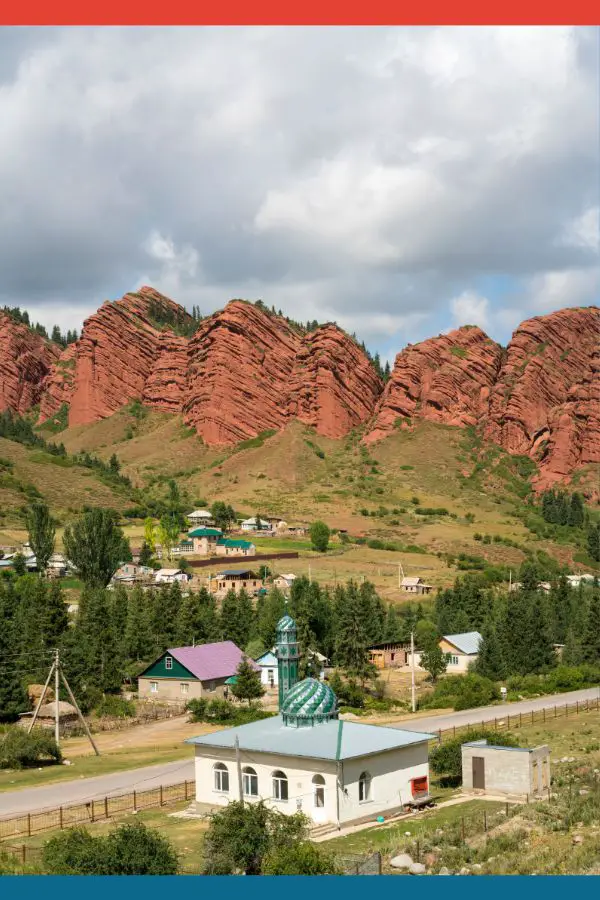
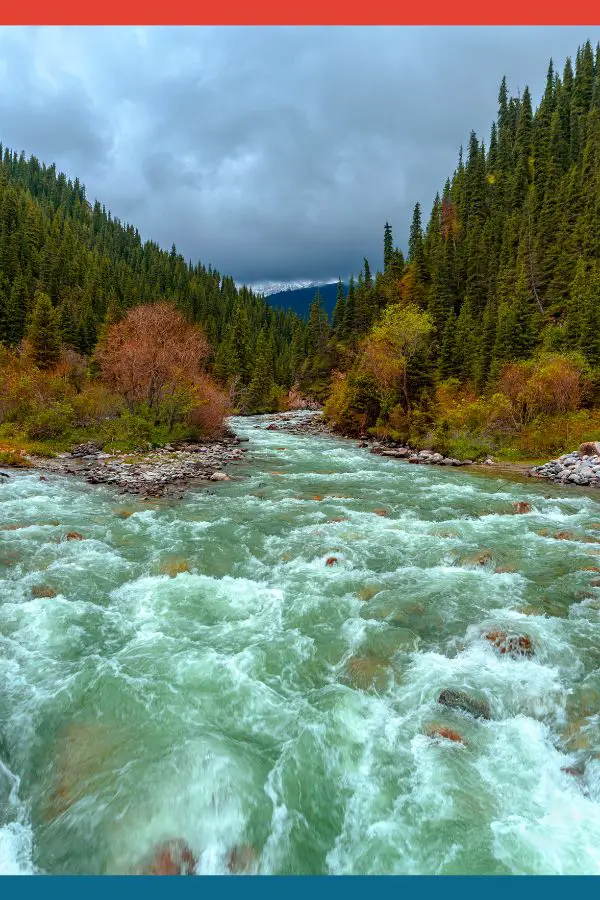
In Kyrgyz “Jeti Oguz” translates to Seven Bulls, and this is how local people refer to one of the most beautiful and famous places in Kyrgyzstan. Located in the southeast of the Issyk-Kul basin, this mountain valley was formed centuries ago by the river of the same name that descends to Lake Issyk-Kul from the northern slopes of the Terskey Ala-Too ridge.
Usually visited as a day trip from Karakol, green countryside gives way to snow-capped mountains until suddenly the seven chiselled, burnt red rock faces that form the namesake of the region appear. Broken Heart and Seven Bulls are protrusions of deep red rock that rear out from the Alpine forests and make up one of the country’s most famed natural landmarks, regularly promoted at bus stops and airports throughout the land.
Legend has it that the cliffs were once wild bulls, immobilised by the gods to stop them terrorising local yurt dwellers. Zigzagging trails lead you up Seven Bulls – an easy 30 minute climb– and other trails lead you around the ridges for gorgeous rolling-hill views.
The Broken Heart is a cleft formed at the back of the bulls and is the source of many tragic love stories. You’ll need to travel 20 minutes outside of town and look back to appreciate this – though the “heart” is really just a hole between two rocks. However, it’s worth the drive as on the way you’ll pass beekeepers selling delicious pots of honey.
Jeti Oguz is a sleepy, charming Kyrgyz village and if you have time choose to stay a night or two to enjoy the pretty valleys and lush summer pastures. An easy hike starts in the village and zig zags on a rocky trail to the river, and finally on to the picturesque Valley of Flowers – Kok Jaiyk. Visit in spring to catch a blanket of wild flowers that turn whole pastures shades of red and blue.
Yurts, men on horseback shepherding cattle, and unbelievably beautiful pastures perfect for a picnic await your discovery. Enjoy a good sleep in your yurt and in the morning trek or horse ride a narrow and dusty trail that winds uphill through the cooler Alpine forests to the Devechi Kosy waterfall. Epic, serene countryside and in our opinion one of the best places in Kyrgyzstan from which you’ll find it hard to leave!
Back at the Seven Bulls is a Soviet built Sanitorium, the Jeti Oguz Resort. It is not advisable to stay here overnight as facilities are rundown, but it is interesting to visit as it offers therapeutic water treatments, created from natural hot hydrogen sulphide waters, fabled to have healing powers.
In the upper reaches of the Jeti Oguz River, you’ll discover lakes, waterfalls and a small zoological reserve. Djergalchak Game Reserve is a protected area established to conserve and reproduce game animals such as wild boar, wild goat, red deer, Turkestan lynx, Himalayan brown bear, snow leopards and golden eagles.
Getting to Jeti Oguz: From Karakol take a bus or shared taxi for a quick 40 minute ride to the Sanatorium carpark.
Top attraction to visit: Seven Bulls
Ala Kul Lake
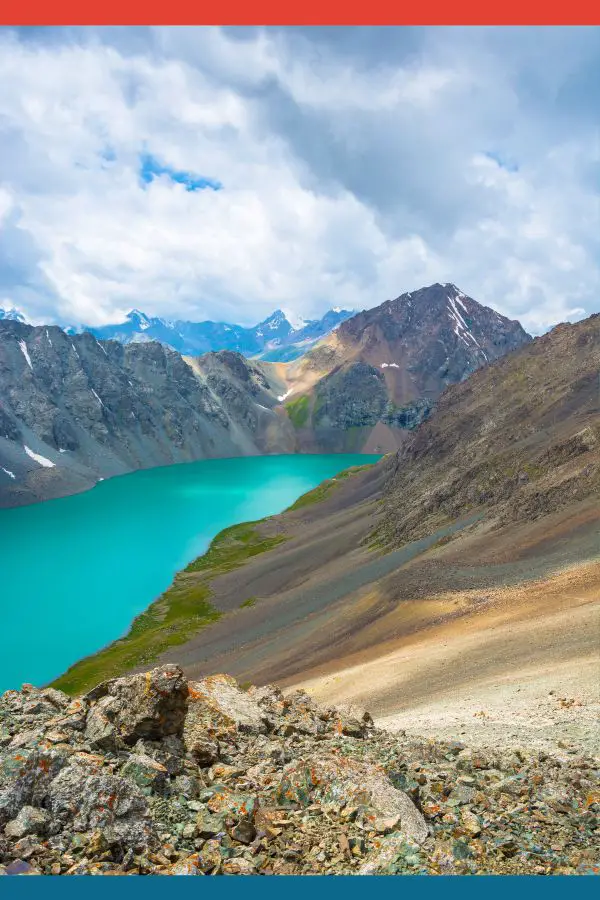
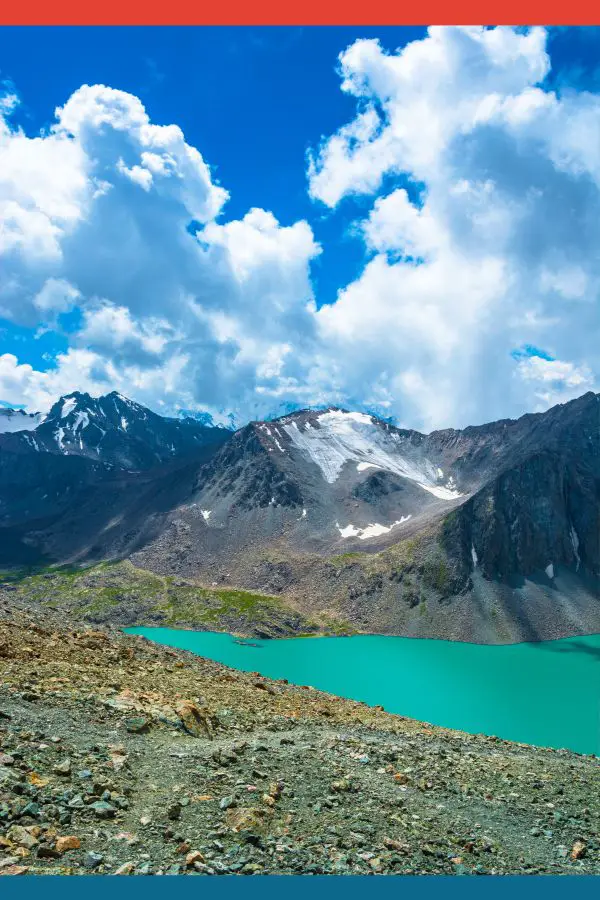
Kyrgyz-Republic, sometimes known as the Land of Celestial Mountains, is full of pristine valleys, crystal clear mountain lakes, powerful mountain rivers, snowy peaks, a smattering of wild horses, yurt camps and rich flora and fauna. Amongst the plethora of hiking options a favourite for many is the trek from Karakol to Ala Kul Lake.
Located in the middle of the rocky ridges of the Terskey Alatau mountain range, at a height of over 3500 metres, the lake stretches 1.5km. With a depth of up to 70 metres, the colour of the lake changes with the passing weather.
The trek to Ala Kul Lake is challenging but can be completed by most people of average fitness. And the scenery is breath-taking… making it well worth the hard work. Choose to carry your own camping equipment or, during peak season, you will find multiple camps set up along the route.
The best time of year to hike is June-September, and can be enjoyed by either a 2 night-3 day trek or a more leisurely 3 night-4-day trek. Taking you from the national park’s entrance, just outside of Karakol, through the 45km to Ala Kul, this is a hiker’s paradise.
To check the route and the week’s weather conditions, head first to the Destination Karakol office in the centre of town. Helpful staff will assist with any queries you have, pick-up a map of the area and from here you can also pre-book your camps/guesthouses along your chosen route.
You’ll find that the yurts provide dinner and breakfast, but there are few options to pick up snacks along the route, and no lunch venues. There are many places to fill your water bottles but don’t forget to carry a SteriPen (UV filter).
The trail is easy to follow, with the help of the maps, however – especially as mountain weather can be unpredictable – you might choose to hire a guide or meet up with fellow hikers in Karakol and tackle the challenge together.
An initial 4-hour flat hike takes you to the first yurt camps. Depending on how leisurely a trek you’re planning, this might be your first overnight. From here, it’s a one hour climb up to the next set of yurt camps. Get ready, as after this it gets tough! A two hour climb up to Ala Kul provides you with some of the world’s most magnificent scenery, rivers with wild horses bathing and mountains covered in tall alpine firs or green pastures.
You’ve made it! And the mesmerising scenery is your prize – the impossibly blue alpine lake of Ala Kul surrounded by snow-capped mountains. If the altitude isn’t making you feel dizzy or out-of-breath, set up camp on the shores of the lake and spend a (chilly) night far away from civilization.
From the Lake, most hikers head down towards a hot spring village, Altyn Arashan, first managing another steep pass before finally taking a path down to lush green valleys and zigzagging streams. A long walk, approx. 6 hours, takes you to the “golden spa”, Altyn Arashan, where you can rest your aching limbs in the hot springs.
By extending a day or two, it’s possible to combine this hike by starting or ending in Jeti-Oguz.
Getting to Ala Kul Lake: From Karakol, travel the short journey by bus (marshrutka) to the beginning of the Karakol Valley. National Park entrance fee required.
Top attraction to visit: Ala Kul Lake
Osh
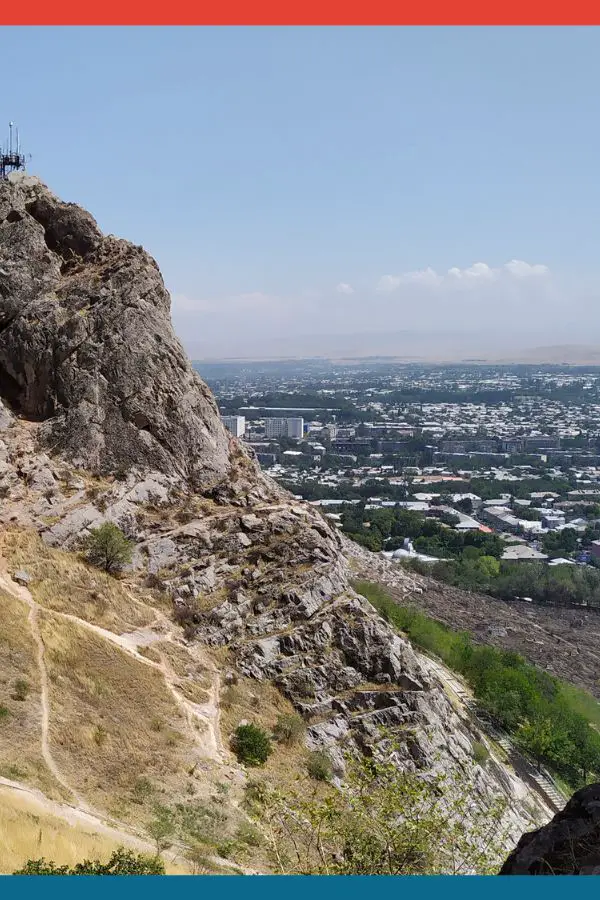
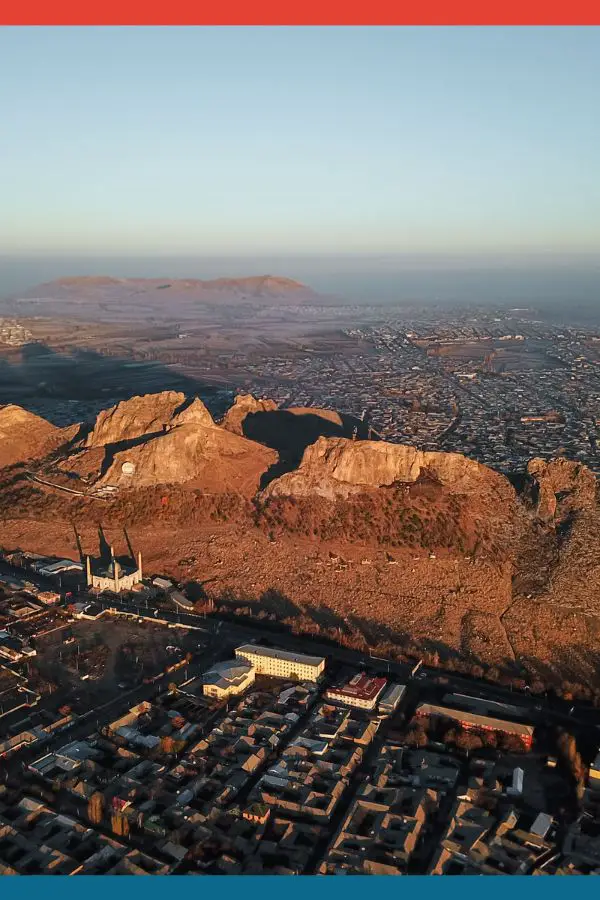
Serving for over three millennia as a crucial city in Central Asia, Osh is located in Southern Kyrgyzstan’s fertile Fergana Valley. Sacred Sulaiman-Too Mountain rises from the heart of Osh – once serving as a beacon for Silk Road travellers and traders trekking down from the Pamir-Alay Mountains. Today this second largest city in Kyrgyzstan is vibrant and multicultural, with over 80 ethnicities. The fascinating history of this city lives on in the bustling bazaars, culture, and cuisine.
Osh is your gateway to world-class trekking in the nearby Pamir-Alay Mountains or Tajikistan, just 5km along the Pamir Highway, however we recommend to stay a few days and discover the local area.
With a history stretching back over 3,000 years, home to Kyrgyz, Uzbek, Russian, Tajiks, the Osh Outdoor Bazaar is a good starting point, as an almost living-museum for the region. This colourful green bazaar showcases fresh local fruits and vegetables, fabrics of adras and ikat, spices and dried fruits, pottery and silks. Get up early one morning to visit one of three animal markets in the region, where vendors engage in lively negotiations over a wide range of livestock.
Stroll the old mahallas (local districts) and mosques, which attest to the city’s medieval age. Located just below Sulaiman-Too Mountain is Osh’s largest mosque providing dramatic views of the sacred mountain. View the Soviet monuments – the Lenin statue is one of the largest in the world – and memorials that show the sweeping changes of the 20th century Soviet-era past. Visit The Cathedral of Archangel Michael, a Russian Orthodox Cathedral, or relax in one of the many green parks – Navoi Park is a local favourite, with small amusement rides, cafes and locals enjoying some serious chess.
Feeling hungry? Being on the crossroad of cultures, Osh cuisine is rich with tasty foods. Lepashka – a bread baked in a clay oven – is a local favourite. Maida Manty – small dumplings with mashed potatoes and greens inside – make a great snack. Or try Shishkebab – an assorted meat kebab.
Museum time… Turgunbai Sydykov Museum of Fine Arts carries a permanent exhibit of various styles, from socialist realism to Central Asian modern, including work from Kyrgyz artisans. The National Historical and Archaeological Museum Complex Sulayman includes more than 30,000 pieces of archaeological and ethnographic artifacts, works of handicraft, paintings and sculptures. Alternatively, as the Fergana area is famed for its silk and pottery, enjoy a tour of one of the many handicraft workshops.
The Sulaiman-Too mountain, enveloped in legends and fables, was the first UNESCO World Heritage Site listing for Kyrgyzstan, and has long been considered a sacred place. Evidence of this can be seen by the ancient petroglyphs drawn in the caves on the slopes of the mountain, and ancient manuscripts mention that 366 of the 124 thousand prophets sent down by God had visited this mountain. Towards the top is a historical and architectural complex, with many monuments stretching across different eras – the Takht-i-Suleiman Mosque, Ravat Abdullahana Mosque and the Asaf ibn Burhiya Mausoleum.
Head out of town to Uzgen, an ancient town on the banks of the Kara Daria River in the beautiful lush Fergana Valley. The remains date from 11-12th centuries, when Uzgen was a major Silk Road town and the eastern capital of the Karakhanid Dynasty. Visit the Uzgen Bazaar or one of its traditional rice mills.
And finally, it’s time to hit the trails. Trekking options from Osh to the Pamir-Alay Mountains are immense, from one-day soft-adventures to multi-day foot and horse treks exploring gorges, rivers and high mountain passes.
Getting to Osh: Fly in to Osh International Airport, with flights from Moscow, Kuwait and Bishkek (40 minutes). Drive on good highways from China, Tajikistan, Uzbekistan. Or take a Bishkek-Osh shared taxis, approximately 10 hours- best taken in daylight hours.
Top attraction to visit: Sulaiman-Too Mountain
Alay Valley
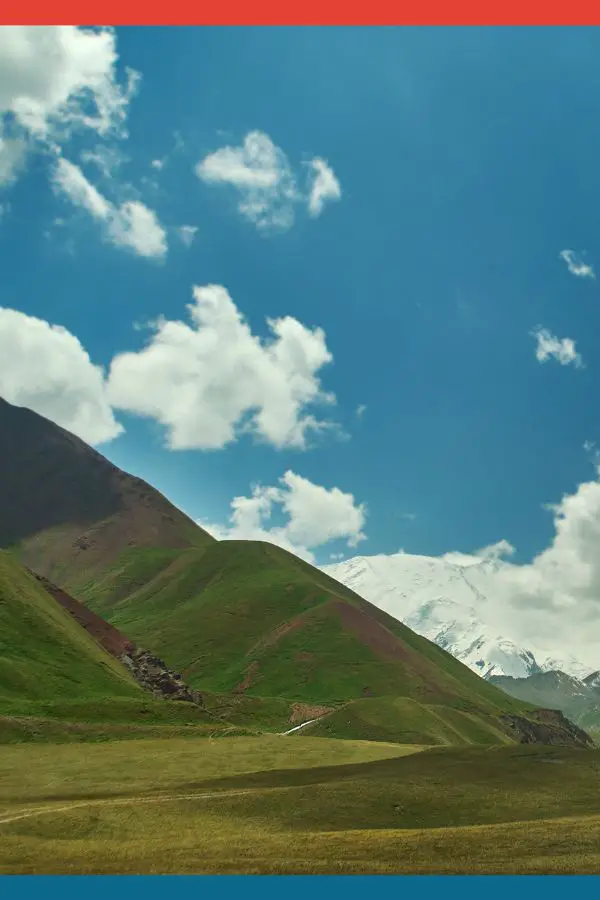
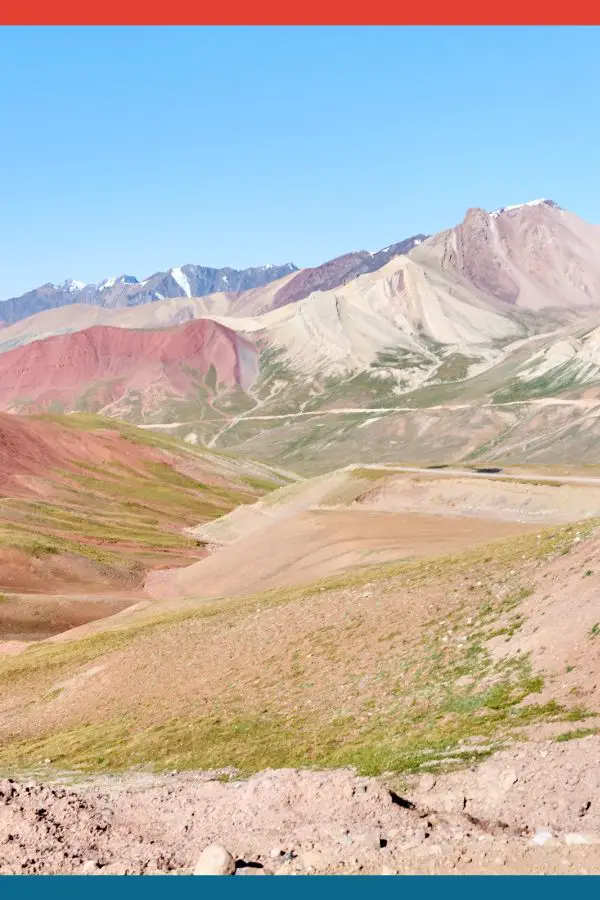
Almost completely unknown, this corner of Central Asia is cheap to visit yet offers world-class mountain views at every turn.
The Alay Mountains (or the Alay Valley) is Central Asia’s trekking utopia. A sub-range of the towering Pamir-Alay Mountain system crossing Kyrgyzstan and Tajikistan, the region consists of two parallel mountain ranges – the Alay and Trans-Alay, separated by the high-altitude Alay Valley.
World-class trekking options abound, from one-day hikes – viewing stunning turquoise alpine lakes and snow-covered mountain panoramas – to varied multi-day treks to remote ranges with ethereal views. The trekking season is short (late June-September) as the mountains are high and winters cold. Bring your own camping gear, homestay, or sleep at a yurt camp.
Wild horses, summer pastures filled with Kyrgyz herders of sheep, cows and yaks, summer flowers and trickling streams. Blissful.
A network of Community Based Tourism (CBT), set up to provide a source of income for communities bypassed by mainstream tourism, offer you no-hassle vehicle and horse hire, guides, homestays and a network of herders’ yurts. With their help it is possible to hike several routes in the Alay with no more than a daypack, and all for incredibly low cost.
Glucha is the true gateway to the Alay, and home to the region’s best museum dedicated to Kyrgyzstan’s “Queen of the Alay”, a local female chieftain. Visit the small Victory Park, featuring a WWII-era tank and monument busts of Soviet-Afghan war heroes. Here is also the jumping off point to three of the area’s most unappreciated hikes and a possible transfer point for the spectacularly located Sary-Oi Yurt Camp – where visitors can help milk cows and mares, make bread, and enjoy the authentic culture of the nomads.
Possibly the most interesting route to access the Alay Valley is by foot, crossing over the 4180m Jiptek Pass. A relatively easy three-day trek – in July or August – staying in CBT-run yurts either side of the pass.
Situated at the meeting point of the roads to Osh, Murgab (Tajikistan) and Kashgar (China), Sary-Tash is a tiny village with dazzling mountain views. A few homestays make this also a great base to start exploring the Alay Valley.
Another highway village, Sary-Mogol, has the valley’s best views of Peak Lenin. A popular choice for mountain hikes, with homestays and horse treks to Tulpar Kol and Peak Lenin Base Camp in the south, or Jiptek Pass and further beyond to the north.
Peak Lenin is the highest summit of the Pamir Alay, at 7134 metres, straddling the border between Kyrgyzstan and Tajikistan. It is one of the world’s most popular and accessible 7000’ers, with an unusually straightforward approach from Achik Tash. The snow-covered ridges and slopes aren’t particularly difficult for experienced mountaineers, but the altitude and notoriously changeable weather can be.
For something less challenging, visit in July to enjoy the Horse and Yak Games Festival at Lenin Peak base camp.
Tulpar Kol is the largest in a string of 42 small lakes and stretches almost a kilometer in between the last small foothills and skirts the bottom of Peak Lenin. Peaceful pastures, reach up to snow-capped mountains stretched along the lake’s vast shoreline at this dizzy 3500m altitude. Horseback rides to the lake are available from a nearby village and the Lenin base camp is also nearby.
Kolduk Lakes is another adventurer’s dream location, above a hilly jailoo (traditional summer pasture) ringed by yurts, with the largest Kolduk lake backed by a craggy mountain gorge. Local families make camp here from May to September offering their fresh dairy products.
Finally, at the end of this wide-open Alay valley, is Daroot-Korgon. Truly remote, the village is the capital of the Chong-Alay District, and home to approximately 5,000 people. Trek a two-day loop in the mountains north of this city or an amazing nine-day walk heading through the Kyrgyz-Ata National Park and back down to Sary-Mogol. Make the effort to reach Daroot-Korgon and you’ll be rewarded with plenty of trekking options and very few tourists.
Getting to Alay Valley: Couple of hours drive from Osh. The region also has a new train link connecting to Tashkent, Uzbekistan.
Top attraction to visit: Peak Lenin
Map Of The Things To Do In Kyrgyzstan
To help you plan your trip to Kyrgyzstan, find all the top 10 tourist attractions in Kyrgyzstan on the map below.
We hope you enjoyed this list of the best places to go in Kyrgyzstan. Looking for more inspiration and help with planning your trip to Kyrgyzstan? Find all our guides here.

